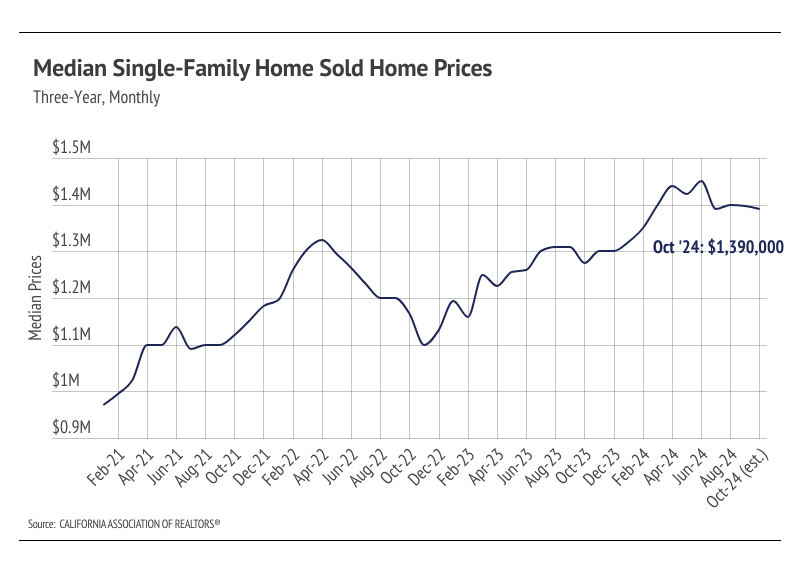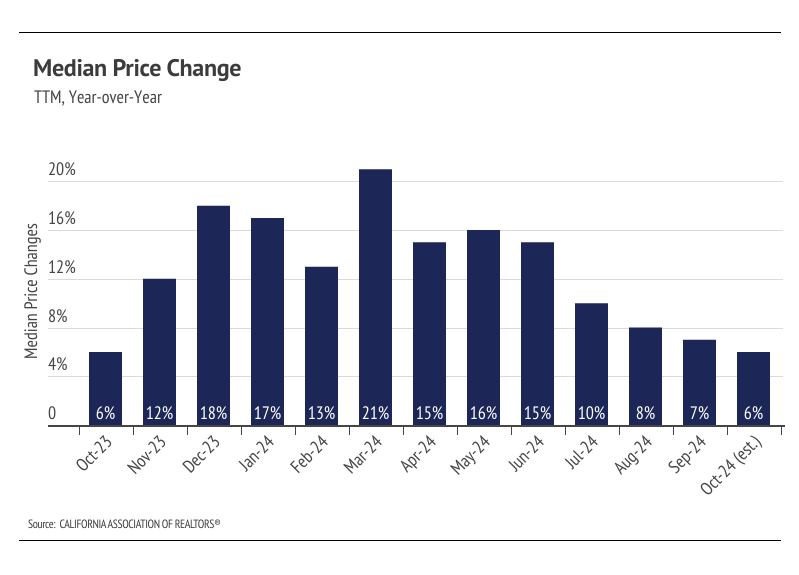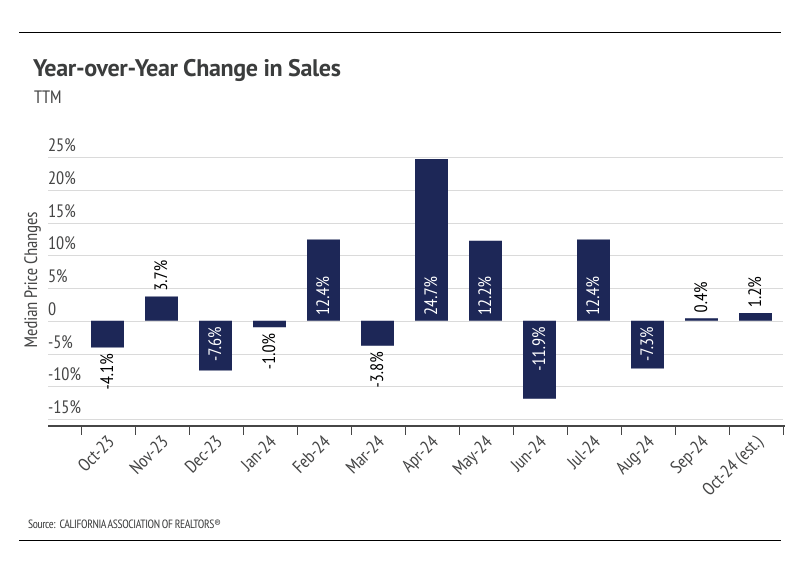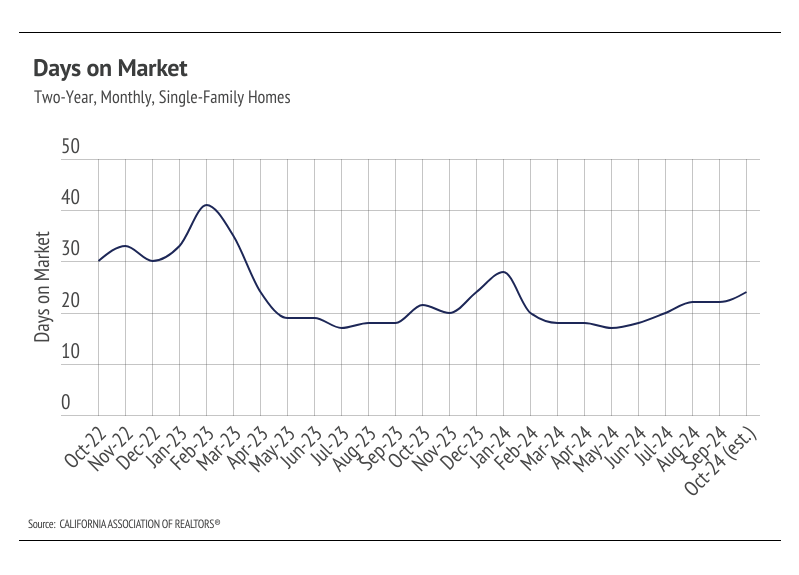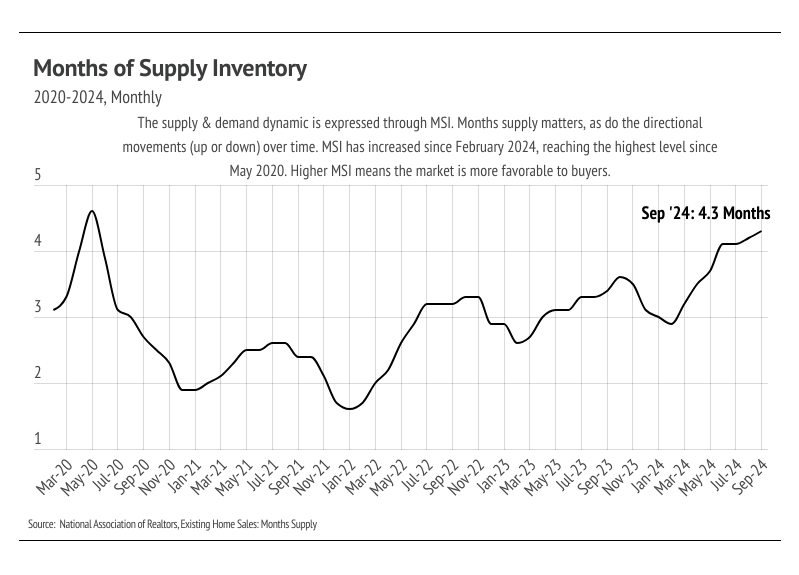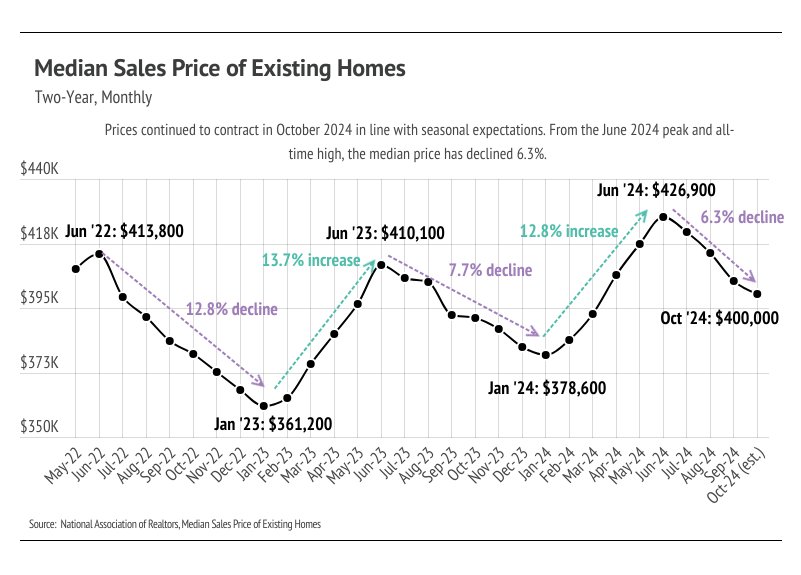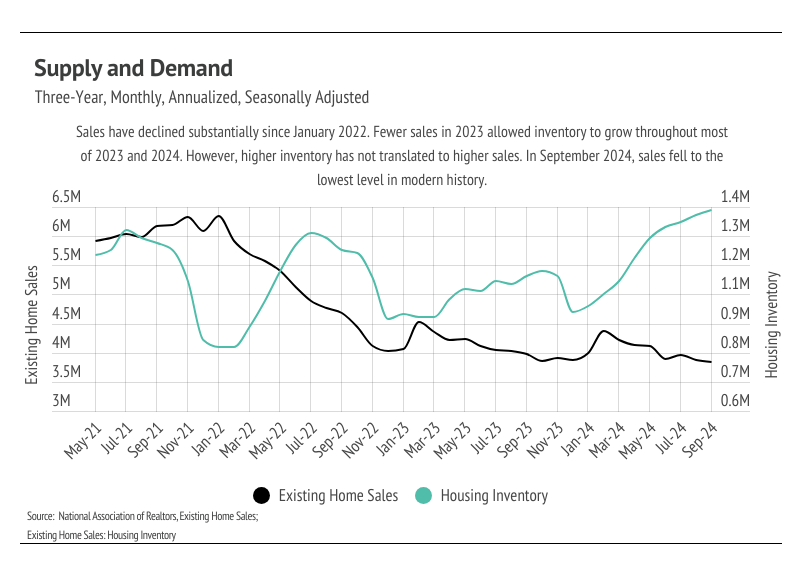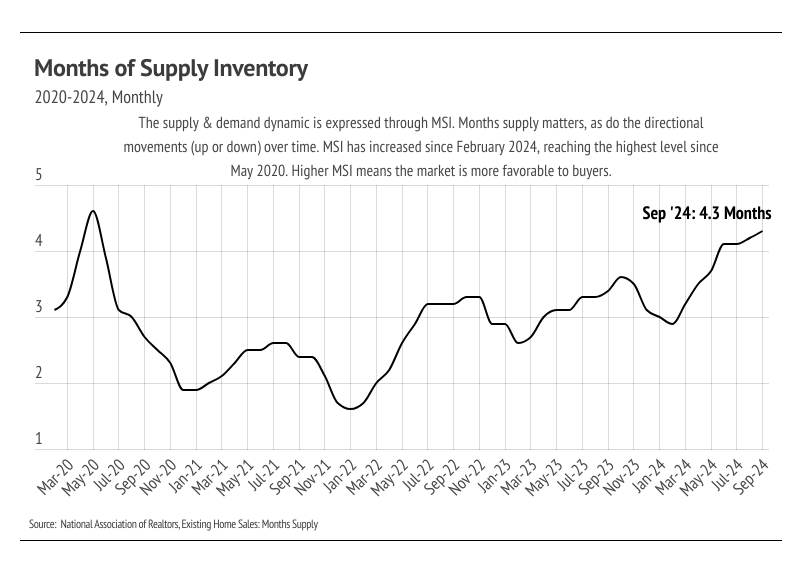The Big Story
Sellers are coming back to the market
-
After the election of Donald J. Trump, bond prices increased in anticipation of his inflationary policy positions. Interest rates are the most significant factor financially in purchasing a home for most buyers, and as we’ve seen over the past two years, higher rates translate to lower sales.
-
From October 1 – November 7, the average 30-year mortgage rate rose 71 bps, landing at 6.79%. The Fed cut rates by 50 bps in September and another 25 bps during the Fed’s November 6-7 meeting.
-
Sales declined 1.0% month over month, falling to the lowest level in modern history, while inventory rose to its highest level since 2020. The spike in mortgage rates should further slow the market in the winter months.
Big Story Data
-
The median single-family home price declined in October, which is normal in the fourth quarter. We expect price contractions through January 2025, which is the seasonal norm.
-
Inventory has doubled since the beginning of 2024. More homes on the market only benefits Orange County, which has been extremely undersupplied for the past four years.
-
Months of Supply Inventory has trended upward since May and rose above three months of supply last month, indicating the market has shifted from a sellers’ market to a balanced market. Homes are still selling quickly, but Days on Market is moving slightly higher.
Local Lowdown Data
